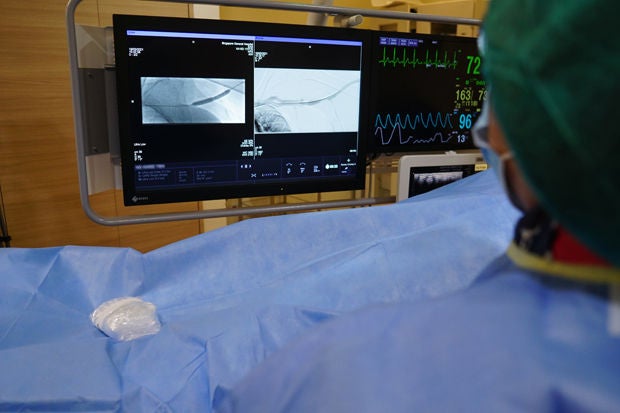
Media Release
Singapore, 24 March 2021 – Besides the thrice-weekly haemodialysis sessions in a dialysis centre, 70 per cent of patients with a history of blocked graft have to visit the hospitals to unclog it every six months. The graft, typically in the arm, is used to access patient's blood vessels during dialysis to remove waste products and extra fluid. Without the access, consequences can be fatal.
To explore another possible treatment option that can keep the graft viable for a longer duration, a team of clinicians from Singapore General Hospital (SGH) conducted a pilot study using an angioplasty balloon coated with sirolimus, which has been used successfully to prevent repeated narrowing of the coronary artery.
"A blocked graft is one of the commonest causes of hospitalisation in patients on haemodialysis. Understandably, it can be frustrating for them as the need for repeated treatment to salvage a failing graft is on top of their thrice-weekly dialysis sessions. Imagine the extra time and cost that they had to incur as a result," said Associate Professor Tan Chieh Suai, Head and Senior Consultant, Department of Renal Medicine, SGH. Prof Tan is also the senior author of the study.
Together with his colleagues from the Departments of Renal Medicine, Vascular Surgery, and Vascular and Interventional Radiology, the team recruited 20 patients between October 2018 and October 2019 for the study. The patients first underwent a procedure to clear the blockages, followed by an angioplasty where a catheter with a sirolimus-coated balloon at the end was inserted into the affected area. Once in place, the drug-coated balloon was inflated to transfer the drug to the interior walls of the graft and blood vessel joint. The balloon is then deflated and removed. Patients remained awake throughout the 1-hour procedure performed under local anaesthesia.
The team discovered that at six months, 50 per cent of the studied patients needed another repeat procedure. This was 20 per cent less than those treated with current treatment options such as insertion of a stent, which can be costly, a plain balloon, or a balloon coated with chemotherapy drug, paclitaxel.
"While 20 per cent may not seems much, it makes a huge difference for the few patients who do not require another procedure so soon as there is presently no better option for them," said Dr Tan Chee Wooi, Senior Resident, Department of Renal Medicine, SGH, and the study's first author.
Results of the pilot study funded by the SingHealth Duke-NUS Academic Medical Centre were published in the peer-reviewed Journal of Vascular and Interventional Radiology in December 2020. SGH has since embarked on a 1-year follow-up joint study with Sengkang General Hospital and National University Hospital to determine if sirolimus drug-coated balloon has similar efficacy in 170 patients with a failing fistula, a more common form of dialysis access.
In Singapore, about 10 per cent of the patients on haemodialysis are using a graft, which is prone to infection and clotting, for dialysis because they have small or poor veins. The proportion of graft-users will increase over time with our ageing population, as older patients starting dialysis are more likely to have poor veins.
For media enquiries, please contact:
Ms Carol Ang
Communications Department
DID: 6326 6085
Email: Carol.Ang@sgh.com.sg













 Get it on Google Play
Get it on Google Play